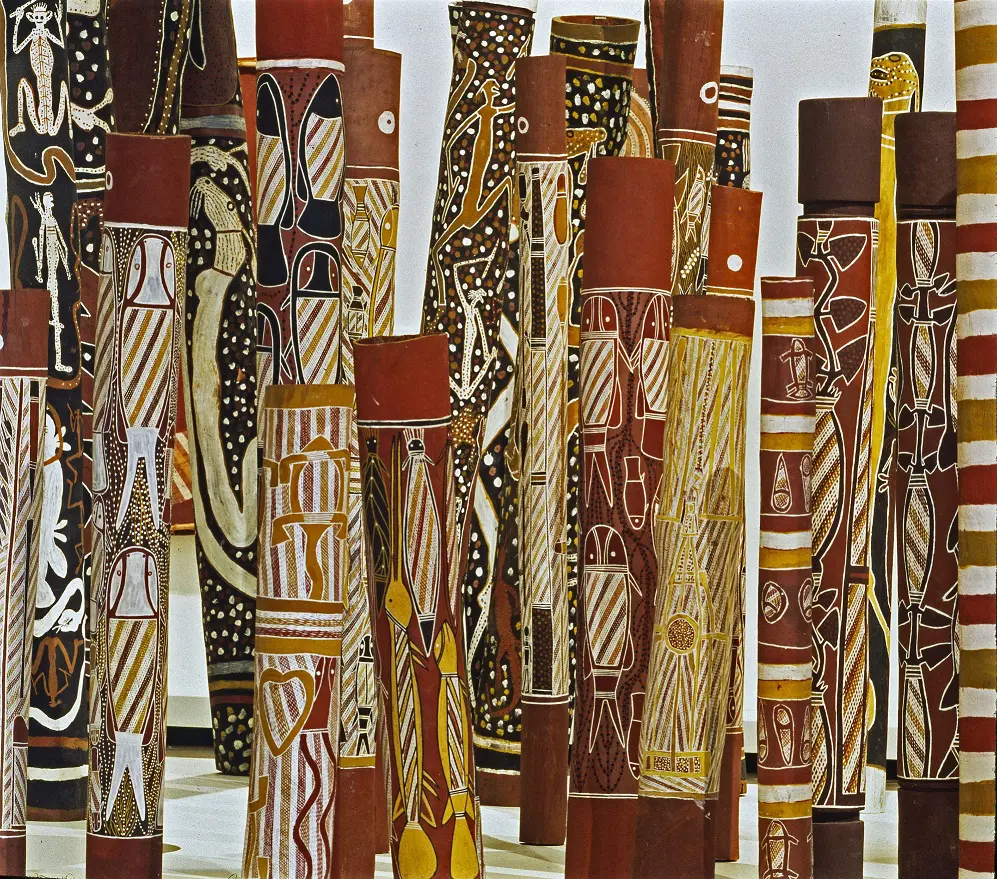Media Release – 5 October 2010
Last week’s opening of the major extension Stage 1 to the National Gallery of Australia marked a new era in the history of the Gallery—home to the national art collection. The new wing includes a striking new entrance and foyer, Gallery Shop, multi-purpose function hall, the Gandel Hall, street café and most importantly 11 new Aboriginal and Torres Strait Islander galleries.
Ron Radford AM, Director of the National Gallery of Australia, said, “This is the most significant development to the National Gallery of Australia since it opened in 1982. This is the first increase in our permanent collection space since the Gallery opened, and these are the first galleries specifically designed for the display of different kinds of Aboriginal and Torres Strait Islander art.
“The National Gallery of Australia owns the largest collection of Australian Indigenous art in the world, over 7500 works of art, and now many of these will be displayed in 11 dedicated galleries and spaces.
“The new Stage 1 development also provides the Gallery with a more visible and accessible street-level entrance and grand foyer, a new shop featuring exclusive product and the magnificent Gandel Hall for openings, functions and public program activities. These are the facilities now expected of a well attended modern museum.
We would like to acknowledge the Federal Government for supporting this major redevelopment of the National Gallery of Australia. It is for all Australians. The generosity and support of visionary benefactors of Stage 1, Pauline Gandel and John Gandel AO and Gordon Darling AC, CMG, and Marilyn Darling AC, has been honoured through the naming in perpetuity of the Gandel Hall and the Gordon and Marilyn Darling Gallery for the Hermannsburg School”.
The 11 new galleries will showcase over 600 works, some never shown before or not shown in a long time and there are many new acquisitions. Each gallery is specifically designed for a different geographic region or aspect of Indigenous art and, where possible, paintings and sculptures are illuminated by natural daylight, similar to the light in which the works were created.
“It is a real honour to be the custodian of this collection that celebrates the best of Indigenous art. This art, which has been created for over 40 000 years, continues to evolve and change, to surprise and stimulate,” said Franchesca Cubillo, Senior Curator of Aboriginal and Torres Strait Islander Art.
“These galleries show the breadth and diversity of Aboriginal and Torres Strait Islander art. Visitors will see the masters of Australian Indigenous art, including Rover Thomas, Clifford Possum Tjapaltjarri, Emily Kam Kngwarray and Albert Namatjira, as well as very early and new and emerging artists. The collection spans generations, from the 19th century to works created this year.”
The galleries cover key art regions in Australia, including the Torres Strait Islands, from remote, regional and urban areas. Galleries include dedicated spaces for: The Aboriginal Memorial 1987–88, one of the most important works in the national art collection; 19th-century objects; early Western Desert paintings; desert paintings after 1975; paintings from the Kimberley; bark paintings and sculpture before 1980; watercolours from the Hermannsburg School; textiles; prints and drawings; works from north Queensland and the Top End after 1980; art from the Torres Strait Islands; and works by artists working in urban areas.
Also on display in the new wing are key sculptures and works from other areas of the national art collection, including Habakuk 1934/1970 by Max Ernst, Plenty 1986 by Rosalie Gascoigne, and Terra incognita 2005 by Imants Tillers.
In addition, the Stage 1 development features in the new Australian Garden the monumental skyspace sculpture Within without 2010 by American artist James Turrell. This work, the largest of its kind, provides an immersive experience using light, perception and space.
There are four new sculptures; three of which were commissioned specially for the Stage 1 development. The Gallery commissioned Melbourne-based artist Mari Funaki to create a sculpture, Twilight that will be sited near the new front entrance doors. Urban Art Projects were commissioned to create two large sculptural works, a 2.7-metre spherical sculpture by renowned senior Indigenous artist Thanakupi and a 12-metre suspended piece interpreted from a Maningrida fish-trap artefact. The fourth work, the Angel of the North (Life-size maquette) by renowned British sculptor Antony Gormley, a generous gift from James and Jacqui Erskine, has just been installed in the Sculpture Garden on the shores of Lake Burley Griffin.
For more information visit nga.gov.au/openingseason
![]()

